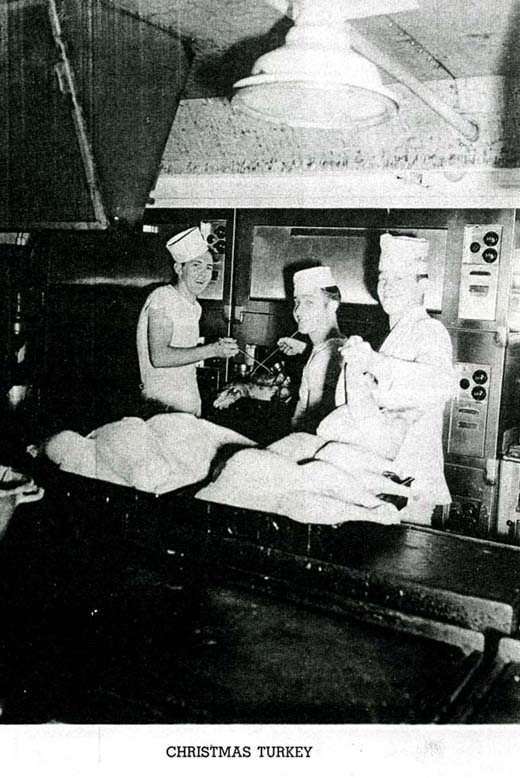1944: The first day of February dawned on Task Force 58 ships engaged in the simultaneous attacks on atoll groups in the Marshall Islands (Operation Flintlock.) The Boston and sister cruiser Baltimore, along with several destroyers detached from the group during the night of Feb. 5 and steamed west. On Feb 6, they bombarded targets on Engebi Island (Eniwetok Atoll). Next day, the ships pull into Kwajalein lagoon, and anchor there while the Marines are still “mopping —up” entrenched enemy troops in the Atoll. The ships pull out on Feb 11 and begin Operation Catchpole — the capture of Eniwetok.
1945: The Boston is in anchorage at Ulithi Atoll until Feb 10. The Task Force is changed from TF38 back to TF58, under the over-all command of Raymond Spruance aboard the cruiser Indianapolis. The Boston forms up with group 58.2. Operational command of the ships is the responsibility of Marc Mitscher, aboard the heavy carrier Lexington. The group consists of the carriers: Lexington, Hancock and San Jacinto, the battleships Wisconsin and Missouri, cruisers Boston and San Francisco and nineteen destroyers (including DesRons52 and 53). They begin Operation Detachment (the invasion of Iwo Jima) by steaming north to attack airbases on the Bonin Islands and Operation Jamboree — bombing targets in and around Tokyo.
1946: The Boston has completed her Occupation Duties, and is heading back to the States to unload her crew prior to her retirement in Washington.

